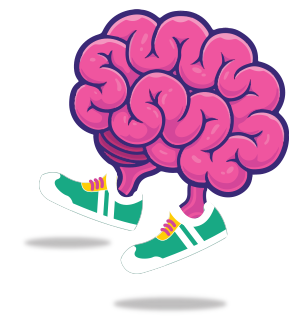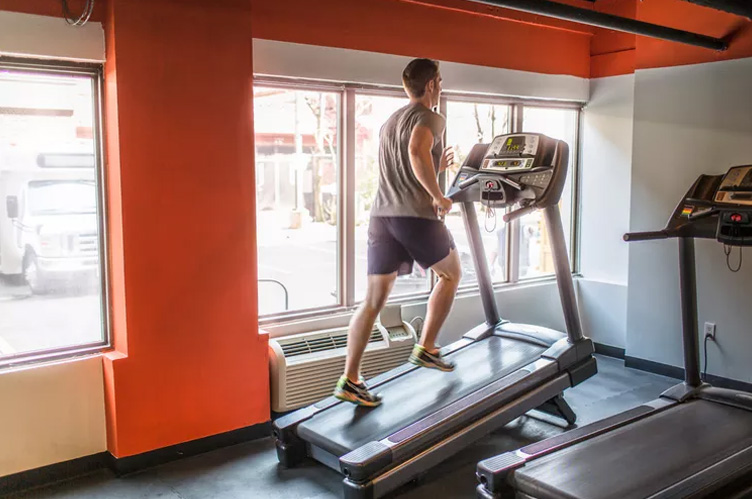How Soon Can I Run My Next Marathon?

Generally speaking, runners should not run more than two marathons a year. If you recently ran a marathon at your top speed and at your full potential, it's best to wait a period of four to six months before racing another.
A good rule of thumb is the harder you run a marathon event, the longer you should wait before running your next.

Considerations for Running Multiple Marathons a Year
The limit of two marathons per year is roughly based on conventional wisdom and research showing skeletal muscle damage, a severely compromised immune system, and oxidative DNA damage to the body of marathon runners after the completion of a 26.2-mile race.2
Muscle damage and inflammation in the body can last around seven days after a marathon.3ïŧŋ Muscles can take anywhere from three to 12 weeks to repair themselves, leaving you susceptible to tears, muscle collapse, muscle strain, or muscle cramps during that time.4 ïŧŋ After a marathon, your body releases cortisol to reduce swelling,5ïŧŋ compromising your immune system as a result. Resting and taking a much-needed break from running is essential for recovering from the damage caused by running a marathon. To reduce the chance of injury and prevent further damage, after a marathon, many elite runners take two weeks off from running. They then take two additional weeks to ease back into training with very easy, light runs.
Deciding on Your Timeline
Listen to your body. Running a marathon places a lot of stress on the body, even if you don't feel particularly sore or run down, which is why it really is best to wait before competing in another marathon so soon after your last race.
ØĻا Ų
ØąØĻÛاŲ ØŊŲ Ų Ų
ØŠØŪØĩØĩاŲ ŲūØēØīÚĐÛ ØĩØØĻØŠ ÚĐŲÛØŊ ؊ا Ų
ØīØŪØĩ ÚĐŲŲØŊ ÚĐŲ ØĒÛا ØŊŲÛØŊŲ ØŊØą ÚŲØŊ Ų
Ø§ØąØ§ØŠŲ ØĻØąØ§Û ØīŲ
ا ØĻÛâØŪØ·Øą اØģØŠ Ų اÚŊØą ÚŲÛŲ اØģØŠØ ØĻÛŲ ØĒŲŲا ÚŲ Ų
ØŊØŠ ØēŲ
اŲ ØĻاÛØŊ ŲاØĩŲŲ ØĻاØīØŊ.
ØīاÛØŊ ØĻŲØŠØą ØĻاØīØŊ Ų
ØģاØĻŲا؊ ÚĐŲ؊اŲâØŠØąÛ ØąØ§ ØĻØŊŲÛØŊ Ų ØģŲūØģ ØĻŲ ØŠØŊØąÛØŽ ØĻŲ Ų
Ø§ØąØ§ØŠŲÛ ÚĐŲ 4 ؊ا 6 Ų
اŲ ØŊÛÚŊØą اØģØŠØ ØĻØąØģÛØŊ.
ØđŲÛØąØšŲ
ØĒÚŊاŲÛ Ø§Øē ØŪØ·ØąØ§ØŠØ ØŊŲŲØŊÚŊاŲ Ų
Ø§ØąØ§ØŠŲÛ ŲØŽŲØŊ ØŊØ§ØąŲØŊ ÚĐŲ ØŊŲ Ûا ÚŲØŊ Ų
Ø§ØąØ§ØŠŲ ØąØ§ ØŊØą ØģاŲ Ų ØŊØą ØĻØąØŪÛ Ų
ŲاŲØđ ŲūØīØŠ ØģØą ŲŲ
Ų
ÛâØŊŲŲØŊ. اÚŊØą اØØģاØģ Ų
ÛâÚĐŲÛØŊ ÚĐŲ ØģØ·Ø ØĒŲ
اØŊÚŊÛ ØŽØģŲ
اŲÛ ØīŲ
ا ØŊØą ØØŊ اÛŲ ÚاŲØī اØģØŠØ ŲÚĐا؊ ØēÛØą ØąØ§ ØĻØąØ§Û ØŽŲŲÚŊÛØąÛ Ø§Øē ØĒØģÛØĻ ØŊÛØŊÚŊÛ Ų
ØŊ ŲØļØą ŲØąØ§Øą ØŊŲÛØŊ.
Plan for the Year Ahead
Select your marathons well in advance so you can plan your training around them. Remember that running is cumulative. You won't train for 26.2 miles over 18 to 22 weeks, then repeat the same sequence immediately after running the first marathon. Your fitness level and running capacity will have increased and your body require a slightly different training schedule that accounts for the long run you just finished.

Take Time to Recover
Take at least three weeks to let your body recover before you start another marathon training schedule.1 ïŧŋ That means no hard workouts or really long runs. Regardless of how hard you ran and how much soreness you experience, running 26.2 miles takes a toll on your body and it's important to take the proper steps for recovery.
Muscle soreness usually diminishes a few days after running a marathon, but your muscles will still need time to rebuild and rebound, which may take anywhere from three weeks to 12 weeks. Follow a "reverse tapering" schedule, where you slowly ease back into running.
Your recovery plan should also include the proper nutrition to repair tissue damaged during both the marathon and your training. Follow a balanced, whole foods diet high in protein and the adequate carbohydrates and fats you need to get you back to peak performance.6ïŧŋ The sooner your body can recover, the sooner you can jump back into training for the next big race.

Eat Well
For recovery, drinking plenty of water and opting for a diet high in protein, fatty acids, and vitamin C is essential for rebuilding muscle tissue and reducing inflammation in the body. The following foods are high in protein and can aid in your recovery:
- Lean beef
- Fish
- Poultry
- Low-fat dairy products
- Beans
- Nuts and seeds
- Eggs
- Whole grains such as whole wheat and jasmine or basmati rice
Fatty acids can be found in cold water fish such as salmon, nuts, seeds, olive oil, and avocados.
Vitamin C can be found in green leafy vegetables and many fruits.
Once you have returned to training, increase your carbohydrate intake (carbs are found in whole grains, rice, fruits, and vegetables).

Assess Your Pace and Effort in Your Last Race
If you took it easy during the marathon and ran it as a training run or for funâand you don't have any lingering painâthen you should be OK to run another marathon in about 4â6 weeks after your marathon.
Keep in mind that you should only consider running a second marathon so soon after the first if your training for the first race had you logging four to five runs a week, amounting to about 40 to 45 miles per week. You should have also logged at least one long run of 16 to 20 miles in your training.
If you are waiting for more than four weeks after your last marathon, make sure you take it easy for at least two weeks, and then pick up with your marathon training schedule for the remaining weeks.
Include a Variety of Distances
Just because you ran a full marathon doesn't mean that's the only type of race you must, or should, stick to.
Doing 5K, 10K, and half-marathon races between full marathons can help you develop your speed work while improving your VO2 max (the maximum amount of oxygen that can be delivered and used for cardiovascular exercises by your body).
You will not increase your VO2 max if you always run the exact same distance, at the exact same pace, for the exact same time each time you run.
Luckily, you don't have to wait six months after running a full marathon to run a 5K or 10K race. If you are itching to enter a race soon after completing a full or half marathon, waiting four to six weeks before partaking in a fun run should be sufficient time to allow your muscles some recovery from your full marathon.

Adjust Your Expectations
You shouldn't necessarily aim for a PR in every race you enter. If you are running two marathons back-to-back with less than eight weeks in between, adopting a "less than peak performance" mentality is a good idea. Think of your subsequent run as a fun run. Doing so will allow you to pace yourself and reduce the amount of damage to your body.
Even though you shouldn't expect a personal record every time, there are ways to structure your training schedule so that you don't hinder your recovery period, continue to improve your energy systems, and develop your aerobic capacity.

Consider this sample training schedule for completing two marathons, and a few shorter races, all within one year.
Sample Training Schedule for Multiple Races Per Year
| ÛÚĐ ØŠŲ ØąÛŲ Ų Ø§ØąØ§ØŠŲ ŲūÛØīØąŲØŠŲ 16 ؊ا 20 ŲŲØŠŲ Ø§Û ØąØ§ ØŊŲØĻاŲ ÚĐŲÛØŊ. ØĻØąŲاŲ Ų ØąÛØēÛ ÚĐŲÛØŊØ ØąŲÛ ØŠŲØģØđŲ VO2 max ØŪŲØŊ ÚĐØ§Øą ÚĐŲÛØŊØ Ų ÛØēاŲ Ų ØģاŲØŠ ØŊŲÛØŊŲ ØŪŲØŊ ØąØ§ اŲØēاÛØī ØŊŲÛØŊ Ų ÚĐØąØ§Øģ ØŠØąÛŲÛŲÚŊ ØŽŲØģا؊ اÛŲØŠØąŲاŲ ØąØ§ ØŊØą ØĻØąŲاŲ Ų ØŪŲØŊ ØĻÚŊŲ؎اŲÛØŊ. | July to November |
| Participate in a full 26.2 mile marathon. | November |
| Rest and ease back with very easy, light runs for about two weeks. | November to December |
| Begin recovery training. Be sure to include strength training and stride work. | December to January |
| Spend the next four weeks working on speed by concentrating on drills and interval training. | January |
| Participate in a 5K or 10K race. | End of January to February |
| Fall back into week 10 to 12 of your original marathon training schedule. | February to May |
| Participate in second full 26.2 mile marathon. | Mid-May |
| Rest and ease back with very easy, light runs for about two weeks. | End of May |
| Begin recovery training. Be sure to include strength training and stride work. | June to July |
| Spend the next four weeks working on speed by concentrating on drills and interval training. | July to August |
| Participate in a 5K or 10K race. | August to September |
| 2 weeks of recovery and light runs. | September to October |
| Change things up. Jump into half-marathon training. This is a good way to maximize your anaerobic threshold before reverse tapering and going back to training for another 26.2 mile marathon in six months. | October to December |
Avoid Burnout
Running multiple big races back-to-back is certainly not for the faint of heart. Even the most advanced runners will find that they have to change up their training strategy to continue making gains.
Do remember that just as scheduling rest days is critical for recovery, injury prevention, and burnout,10 ïŧŋ so is waiting a healthy amount of time between running full marathons.






 The debate over running on a treadmill vs. outside is not a new one. Running outdoors can improve stability by forcing you to navigate ever-changing terrain. But a treadmill forces you to sustain speed and performance levels that might otherwise lag outdoors.
Ultimately, there is no right or wrong answer to the debate over treadmill vs. outside running. Both methods have their pros and cons based on your individual training needs and goals and both can have their place in your running routine.
The debate over running on a treadmill vs. outside is not a new one. Running outdoors can improve stability by forcing you to navigate ever-changing terrain. But a treadmill forces you to sustain speed and performance levels that might otherwise lag outdoors.
Ultimately, there is no right or wrong answer to the debate over treadmill vs. outside running. Both methods have their pros and cons based on your individual training needs and goals and both can have their place in your running routine.

 You can even use treadmill runs to try out race day clothing and make sure your gear will work for you.
You can even use treadmill runs to try out race day clothing and make sure your gear will work for you. You can also stop anytime you want. But you can also use the treadmill pace to push yourself.
You can also stop anytime you want. But you can also use the treadmill pace to push yourself. Treadmills offer better shock absorption than pavement or roads, which means less stress on the ankles and knees. And when you run at an incline on the treadmill, you build strength and endurance like you would running hills outside. But you don't have to run downhill, which can be hard on your body.
Treadmills offer better shock absorption than pavement or roads, which means less stress on the ankles and knees. And when you run at an incline on the treadmill, you build strength and endurance like you would running hills outside. But you don't have to run downhill, which can be hard on your body. While treadmills are considered the safer option by most users, the CPSC reports that there are more than 24,000 treadmill-related injuries in the U.S. each year. These include sprains, falls, head injuries,2 and cardiovascular events in people who either ran too fast or pushed too hard. (But the figures for outdoor runners are much higher.)
While treadmills are considered the safer option by most users, the CPSC reports that there are more than 24,000 treadmill-related injuries in the U.S. each year. These include sprains, falls, head injuries,2 and cardiovascular events in people who either ran too fast or pushed too hard. (But the figures for outdoor runners are much higher.)
 It Provides Sport-Specific Training for Road Races
It Provides Sport-Specific Training for Road Races It Can Be Motivating
It Can Be Motivating Cons
Cons Additionally, running outside means you're watching the heat and humidity index to avoid potential heat exhaustion in the hot summer months.
Additionally, running outside means you're watching the heat and humidity index to avoid potential heat exhaustion in the hot summer months. On the other hand, when training for a race event, you will clearly benefit more from running outside. While you can incorporate treadmill running to improve your cardio health, experts generally recommend limiting it to no more than 40% of your overall training.
On the other hand, when training for a race event, you will clearly benefit more from running outside. While you can incorporate treadmill running to improve your cardio health, experts generally recommend limiting it to no more than 40% of your overall training.


 In areas with heavy smog, like Los Angeles or Beijing, up to five percent of all of your red blood cells can be overwhelmed by carbon monoxide, and at these levels, even muscular coordination and perception of time can be impeded.
In areas with heavy smog, like Los Angeles or Beijing, up to five percent of all of your red blood cells can be overwhelmed by carbon monoxide, and at these levels, even muscular coordination and perception of time can be impeded.
 More work has also revealed that exercise exacerbates their effects, since the deep, heavy breathing you use while running both increases the total volume of air moving in and out of your lungs and also allows pollutants to bypass your nose, where the mucous tissues can trap some of the chemicals before they get to your lungs.
More work has also revealed that exercise exacerbates their effects, since the deep, heavy breathing you use while running both increases the total volume of air moving in and out of your lungs and also allows pollutants to bypass your nose, where the mucous tissues can trap some of the chemicals before they get to your lungs.













 The point of all those different training modalities? Ideally, you become a better, more well-rounded runner.
The point of all those different training modalities? Ideally, you become a better, more well-rounded runner. Think about your runs in terms of quality over quantity, Kann says. âIf youâre adding additional speed workouts to your week, you donât want to run a super long run that weekend,â she says.
Think about your runs in terms of quality over quantity, Kann says. âIf youâre adding additional speed workouts to your week, you donât want to run a super long run that weekend,â she says.

